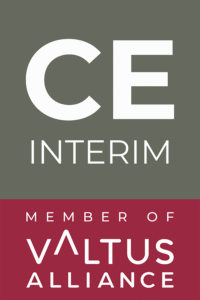Nu aveți suficient timp pentru a citi articolul integral? Ascultați rezumatul în 2 minute.
Reshoring-ul este în creștere, companiile de producție aducând producția înapoi în țările lor de origine. Această schimbare este determinată de factori precum creșterea costurilor forței de muncă în țările în curs de dezvoltare și tensiunile geopolitice care perturbă lanțurile de aprovizionare. În timp ce offshoring-ul era popular la sfârșitul anilor 1970 datorită costurilor mai mici, consumatorii de astăzi acordă prioritate calității și originii în fața prețului, ceea ce face ca relocalizarea să devină o opțiune atractivă.
Resortarea oferă beneficii precum un control îmbunătățit al calității, un răspuns mai rapid pentru clienți și un impuls pentru economia locală. Dar vine și cu provocări și riscuri.
Această postare pe blog va explora ce presupune reshoring-ul, oportunitățile pe care le prezintă și potențialele capcane de luat în considerare.
Ce înseamnă Reshoring?
Resortarea reprezintă restabilirea sistemelor de fabricație și de producție ale unei companii din străinătate în țara sa de origine. Acest proces specific este adesea denumit și onshoring, inshoring sau backshoring. Procesul este exact opusul offshoring, caz în care fabrica în discuție este relocată într-o altă locație din afara țării de origine.
Întoarcerea operațiunilor de producție acasă îmbunătățește eficiența prin apropierea de consumatori.. În acest proces, contribuie, de asemenea, la reducerea costului total de producție. Pe un front mai larg, resortarea contribuie la consolidarea economiei naționale prin crearea de noi oportunități de angajare.
Principalele beneficii ale reorientării fabricii de producție
Relocarea uzinei de producție în țara de origine a companiei vine cu o multitudine de avantaje și oportunități. Să explorăm beneficiile majore ale relocalizării:
Economii de costuri mai mari
Resortarea ajută întreprinderile să realizeze economii mai mari de costuri. Acest lucru este posibil datorită reducerii costurilor de transport ca urmare a apropierii de piață și de consumatori. Resortarea permite, de asemenea, companiilor producătoare să scape de costurile asociate cu anumite tarife internaționale, bariere comerciale și probleme de neconformitate. Companiile beneficiază de aprovizionarea cu materiale la nivel local pentru o producție mai rapidă, eficiență sporită, calitate îmbunătățită și costuri reduse.
Controlul calității superioare
Unul dintre cele mai importante avantaje ale relocalizării este controlul superior al calității pe care îl permite, permițând întreprinderilor să supravegheze și să controleze mai eficient procesele de producție. Întoarcerea producției acasă oferă întreprinderilor mai mult control și vizibilitate asupra etapelor de producție. Acest lucru garantează că standardele de calitate sunt respectate sau depășite în mod constant. Această proximitate facilitează, de asemenea, identificarea și rezolvarea imediată a oricăror probleme apărute, reducând astfel riscul de defecte și sporind fiabilitatea generală a produselor. Resortarea favorizează, de asemenea, o colaborare mai strânsă între echipele de producție și cercetare și dezvoltare, permițându-le să lucreze în tandem și să accelereze inovarea. Acest lucru duce la dezvoltarea rapidă de noi produse și la îmbunătățirea celor existente, ceea ce generează un avantaj competitiv.
Îmbunătățirea rezilienței lanțului de aprovizionare
Relocarea unităților de producție în țara de origine sporește semnificativ rezistența lanțului de aprovizionare prin reducerea riscurilor asociate lanțurilor de aprovizionare internaționale lungi și complexe. Aceasta înseamnă o vulnerabilitate redusă la întârzierile de expediere, termenele de execuție ridicate, lipsuri și întreruperi frecvente. Producția internă minimizează dependența de furnizorii străini, asigurând o aprovizionare stabilă cu materiale și produse.
Apropierea de piață permite întreprinderilor să reacționeze rapid la schimbările din dinamica pieței și la cererile clienților, ceea ce conduce la o mai mare flexibilitate și agilitate.
Mai important, distanța redusă dintre producție și consumatori scurtează termenele de livrare și îmbunătățește capacitatea de a mări sau micșora operațiunile în funcție de cererea în timp real, îmbunătățind astfel eficiența și capacitatea de reacție a lanțului de aprovizionare.
Avantaje economice și sociale
Relocarea fabricilor în țara de origine contribuie la crearea de oportunități de angajare de înaltă calitate, ceea ce stimulează economia locală și contribuie la creșterea PIB-ului.
Investiția în producția locală sprijină comunitățile, reduce șomajul și promovează stabilitatea economică.
Resortarea operațiunilor de producție nu aduce doar beneficii economice, ci ajută și companiile să se alinieze la valorile sociale și etice, consolidându-le percepția și poziția pe piață.
Riscurile și provocările reorientării producției
Pe lângă numeroasele beneficii, relocalizarea producției prezintă și anumite riscuri și provocări care necesită o abordare promptă. Dacă acestea sunt ignorate, decizia de relocare a fabricii de producție în țara de origine a unei companii poate fi catastrofală pentru operațiunile sale de producție. Să înțelegem riscurile și provocările asociate cu resortarea fabricii:
Escaladarea costurilor forței de muncă
Chiar și pe fondul creșterii recente a costurilor cu forța de muncă în țările în curs de dezvoltare, salariile medii sunt încă mai mici decât în țările dezvoltate. Nu toate țările susțin oportunități favorabile de relocare. Dacă firma dvs. se află în Germania, Franța, Regatul Unit sau SUA, reshoring-ul ar putea dăuna din punct de vedere financiar. Acest lucru se datorează în principal faptului că costurile forței de muncă în aceste țări vor fi semnificativ mai mari decât în locațiile offshore. O altă provocare critică a acestei decizii de afaceri este confruntarea cu legislația complexă a muncii și cu sindicatele forței de muncă. Luați în considerare relocarea fabricii dvs. mai aproape de piețele-cheie din Europa de Est sau Balcani pentru forță de muncă calificată și eficiență a costurilor.
Investiție inițială de capital ridicată
Resortarea necesită o investiție semnificativă de capital pentru facilități de producție noi sau actualizate, infrastructură și progrese tehnice. Cheltuielile operaționale, cum ar fi imobiliarele, utilitățile și altele, sunt comparativ mai mari în țările dezvoltate decât în locațiile principale de offshoring. Consultați experții pentru o planificare rentabilă și eficientă a noii locații a fabricii dvs. încă din prima zi.
Întreruperea producției
Relocarea fabricii de producție este un proces care necesită mult timp și care poate cauza potențiale perturbări în timpul perioadei de tranziție. În plus, angajații dvs. ar avea nevoie de timp suplimentar pentru a se adapta la noile procese, sisteme și locații, ceea ce ar contribui la creșterea timpilor morți. Pentru a atenua acest risc, puteți obține ajutorul unui manager interimar expert pentru relocarea fabricii. Datorită experienței imense și expertizei dovedite de care dispun, acești manageri vă pot ajuta să evitați întreruperile de producție, să reduceți timpii morți și să asigurați o tranziție fără probleme.
Gestionarea reglementărilor și conformității
Atunci când reorientați producția către țara de origine, va trebui să respectați reglementările locale în materie de mediu, sănătate și siguranță, care sunt, de obicei, mai stricte decât locațiile de offshoring. De asemenea, compania dvs. va avea nevoie de permisele și licențele necesare pentru a funcționa fără obstacole. Dacă nu sunteți familiarizat cu cerințele legale ale locației fabricii dvs. nou selectate, veți întâmpina unele probleme semnificative. Întotdeauna este o decizie mai bună să discutați cu experți care se ocupă de relocarea fabricii de producție în locația geografică respectivă.
Cum să evaluăm oportunitățile de reshoring?
Este necesară o analiză amănunțită pentru a evalua dacă reorientarea fabricii de producție este decizia corectă pentru compania dumneavoastră. Trebuie să analizați anumiți factori, să comparați investiția inițială ridicată cu beneficiile pe termen lung și să luați o decizie care să satisfacă părțile interesate și angajații.
Pentru a vă ajuta să începeți, am enumerat câțiva factori importanți pe care trebuie să îi luați în considerare înainte de a decide dacă să optați pentru reorientarea producției dumneavoastră.
- Analizați costurile și beneficiile: Comparați costurile și beneficiile relocalizării în raport cu operațiunile existente externalizate. Urmați cu o estimare a rentabilității investițiilor pentru relocalizare.
- Verificați compatibilitatea strategică: Evaluați dacă reshoring-ul se aliniază obiectivelor strategice ale companiei și asigură sustenabilitatea pe termen lung. Pentru aceasta, puteți evalua factori fundamentali precum accesul la piață, oportunitățile de extindere și comportamentul consumatorilor.
- Evaluați lanțul de aprovizionare: Cercetați impactul relocalizării asupra eficienței și capacității de reacție a lanțului de aprovizionare. Elaborați un plan privind modul în care relocalizarea poate atenua riscurile legate de gestionarea lanțului dumneavoastră de aprovizionare.
- Evaluați impactul general: Prevedeți și analizați impactul reshoring-ului asupra angajaților actuali, precum și asupra gestionării și planificării forței de muncă. În plus, înțelegeți impactul acestei mutări asupra comunității locale. În plus, căutați potențiale stimulente și subvenții guvernamentale.
3 pași implicați în reorientarea cu succes a uzinei de producție
Resortarea producției este o procedură complexă care implică mai multe etape-cheie. Neglijarea oricăreia dintre aceste etape va avea un impact negativ asupra operațiunilor dumneavoastră de producție, ducând la nemulțumirea părților interesate, a angajaților și a clienților. Aici am discutat cele trei etape majore implicate într-un proces de reshoring de succes al fabricii de producție:
Elaborarea planului inițial
Procedura începe cu faza de elaborare a strategiei. Trebuie să efectuați o analiză aprofundată a beneficiilor și riscurilor potențiale, să finalizați decizia, să alegeți site-ul și să elaborați un plan de tranziție clar. Acesta trebuie să includă scopuri și obiective bine definite, estimarea și alocarea bugetului, precum și termene și etape. Implicați principalele părți interesate în această etapă, formați o echipă care să vă ajute la reshoring și urmați o strategie de comunicare eficientă pentru o transparență totală.
Execuție: Tranziție și configurare
După finalizarea etapei de planificare, este timpul să executați meticulos planul pentru o tranziție de succes, urmată de instalarea și amenajarea noii locații. În această etapă, încorporați actualizările și automatizarea tehnologiei avansate de producție, dar nu uitați să vă instruiți angajații în acest sens.
Revizuire, monitorizare și optimizare
Aceasta este faza orientată spre acțiune în care trebuie să analizați în detaliu dacă tranziția a decurs conform planului. Puteți colecta feedback de la angajații și părțile interesate pentru a identifica orice domenii care necesită îmbunătățiri. Monitorizarea consecventă și optimizările necesare vor crește eficiența operațiunilor dvs. de producție, conducând la profituri mai mari.
Cuvânt final
Dacă planificați relocarea fabricii de producție în țara de origine, trebuie să luați în considerare toți factorii implicați înainte de a finaliza decizia. Având în vedere procesul descurajant, acesta poate părea uneori copleșitor. La urma urmei, aveți o afacere de condus. Dacă vă obosiți încercând să vă ocupați de fiecare aspect al operațiunilor dumneavoastră, rezultatul final va avea de suferit. De aceea, vă recomandăm să solicitați asistență profesională de la manageri interimari experți. Aceștia sunt cei mai în măsură să vă ghideze în ceea ce privește planificarea adecvată, analiza locației, tranziția fără probleme, integrarea forței de muncă și optimizarea proceselor. Ei utilizează o listă de verificare dedicată relocării fabricii care asigură o tranziție de succes. Relocarea fabricii poate fi complexă, dar companiile de management interimar simplifică procesul.
Când vine vorba de soluții experte de management interimar, CE Interim se remarcă ca fiind prima alegere. Managerii noștri interimari experimentați sunt specializați în facilitarea tranzițiilor fără probleme și optimizarea eficienței operaționale, de la planificarea strategică până la execuție.
Descoperiți cum soluțiile noastre adaptate de management interimar intercultural vă pot ajuta afacerea în timpul procesului de relocare. Completați formularul nostru de contact, iar reprezentanții noștri vă vor contacta imediat pentru a discuta nevoile dvs. specifice de relocare a fabricii. Lăsați CE Interim să vă ajute să deblocați noi oportunități de creștere și să realizați o tranziție ușoară și de succes.





